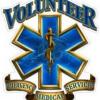All,
I recently joined a snack manufacturing facility. Great place with SQF Level 2 certification and strict adherence to cGMPs. One of the operations is processing of a cheese based cream ( mixing of cheese and other ingredients). The cream is is used as a filling. Processing takes place in a temperature controlled room to minimize the possibility of time-temperature abuse for the milk-based ingredients. Product is frozen afterwards.
We treat this production room as ''high risk''. As a result, shoe covers are worn by all employees before entering the room. Been asked by the COO to carry out a risk assessment and advise him on the issue of shoe covers. Are they necessary? Employees have no company supplied foot wear and there are no door foaming units to sanitize shoes. We mainly operate in a 'dry' environment like Bakeries.
In my assessment, the shoe covers have no significant bearing on the safety of the food products. I would like to offer the best advice from a food safety angle. My submission will be taken seriously by the Company.
What are your thought?
Thank you.
Mambo.






















